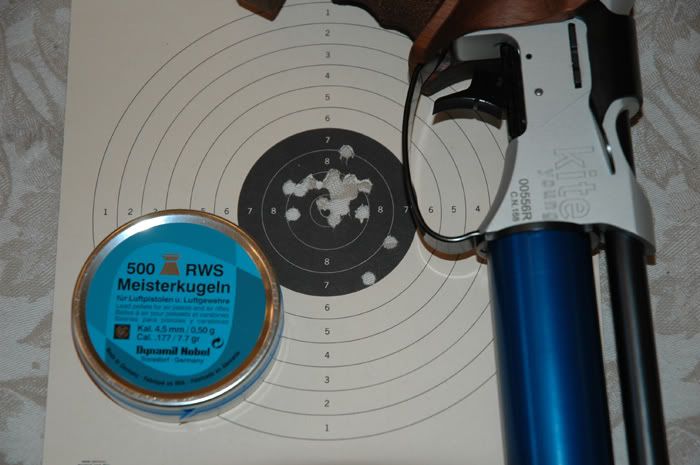RobStubbs wrote:Your point of aim may well change throughout a shoot and to ignore it is asking for inferior results. ... Your sights are there for a reason and if you shoot a technically perfect shot that doesn't end up being that on the target then you need to rectify whatever the problem is.
Sorry, Rob, the math doesn't support you, and neither does your argument about the technically perfect shot.
You should adjust your sights only when the probability is greater than 50% that doing so will improve your score, meaning you have statistically significant data suggesting that if you moved your probabilistic distribution of shots, that it would be better centered. To know whether you're over that 50% threshold requires, even if you do it by eyeballing it, that you consider (a) the sample size, (b) the distance by which the sample is off, (c) the shape of distribution from which the sample is taken and (d) your confidence that you actually know the distribution.
By way of illustration, consider two shooters of vastly different skill levels and a third of unknown skill. Shooter A is a robot who always puts every round through the same ragged hole. Shooter B is completely unskilled and produces a wide bell-shaped distribution with a standard deviation that's several feet across at the target distance. Shooter C is of unknown skill. Now suppose each shooter fires one round and each hits the 6-ring at 2 o'clock. What should you do?
The answer is that you're only justified in adjusting the sights for shooter A. For shooter B, the distribution is known but a sample size of one shot and an error of only a few rings is too small to be meaningful. For shooter C, you don't know the distribution to know if the sample is meaningful.
In real life, most shooters are neither robots nor blind men and they have some history to tell us about their usual performance. If the shooter is very skilled with a lot of history to tell us he always produces a very tight group, it may not take many shots or, alternately, for them to be very far off to be able to say with confidence that the sights are off. But with a novice shooter, it takes a larger sample and/or a larger discrepancy.
Given just a single target, e.g., the one posted at the beginning of this thread, I don't think that's enough data to tell you if the sights should be adjusted. Who's to say that even with no adjustment of the sights, that the next target won't just happen to be the mirror image, off by the same amount but in the opposite direction? The only way to know would be if we had more targets telling us that this shooter always produces very tight groups (confirming that a small error in a small sample is meaningful) or that even if it was a fluke that this group was so tight, it is nonetheless part of a pattern showing the distribution is off-center.
Regarding the "technically perfect shot," we need to return to question of what the objective is in adjusting the sights.
If the objective is to have all "technically perfect shots" in the 10-ring even if only the occasional shot is technically perfect and all the rest display have the same flaw, e.g., a consistent error in the sight picture, then sure, be my guest, adjust your sights for those occasional shots.
But if the objective is to maximize score, then it's not about where the technically perfect shots end up on the paper, it's about what happens to the overall distribution of shots, regardless of what skill or lack thereof is displayed in any given shot.
